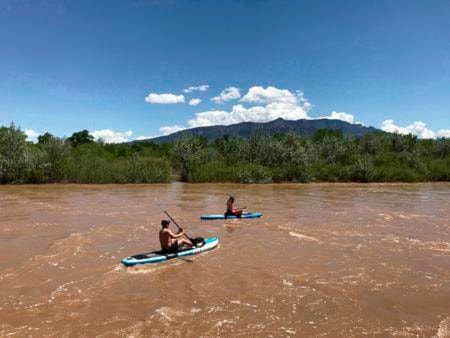RIO GRANDE DEL NORTE NATIONAL MONUMENT, N.M. — Rafting and angler guides are predicting a good season for Rio Grande tourism in New Mexico thanks to strong runoff generated by a good snowmelt this year.
A healthy snow patch this winter is feeding the Rio Grande with much-needed water after long dry spells stemming from drought, the Santa Fe New Mexican reports .
This year, the National Weather Service in Albuquerque predicts runoff to be at least 148% of normal through June.
Water levels were 50% of normal in 2018. Parts of rivers were bone dry or only inches high. Fish — such as trout in the Pecos River — died off and long sandbars formed along once-wet areas.
“Everybody says it’s gonna be a huge year and I think they’re right,” said Britt Runyon of Dixon, New Mexico-based New Wave Rafting.
Other rafting guides in Northern New Mexico agree. So do anglers, who expect a good summer of fishing even though the Rio Grande is still moving too high and fast for them to start casting their lines.
“It’s a momentary restoration of the process that made the river what it is,” said Steve Harris, a river guide and conservationist who oversees the non-profit Rio Grande Restoration project, designed to keep the river healthy.
“It’s good,” Harris added, “but it’s not the solution to our drought.”
Those who raft, fish, kayak or depend on the river for irrigating crops understand that. But for them, the ample spring runoff is nevertheless a blessing.
In addition to tourism, strong runoff is predicted to help the ecosystem around the river and its banks.
University of New Mexico biology researcher Rebecca Bixby said the increased flow will help the endangered Rio Grande silvery minnow lay eggs and spawn.
With some overbanking, or flooding, the river also will provide water to the cottonwood trees lining the shores and replenish the groundwater in the bosque adjacent to the Rio Grande.
Mike Ruhl of the Fisheries Management Division of the state Game and Fish Department said this year’s runoff will help the river clean out gravel bars where trout spawn and draw woody vegetation, like fallen trees, into the river, which will create logjams that are “great for fish habitat.”
